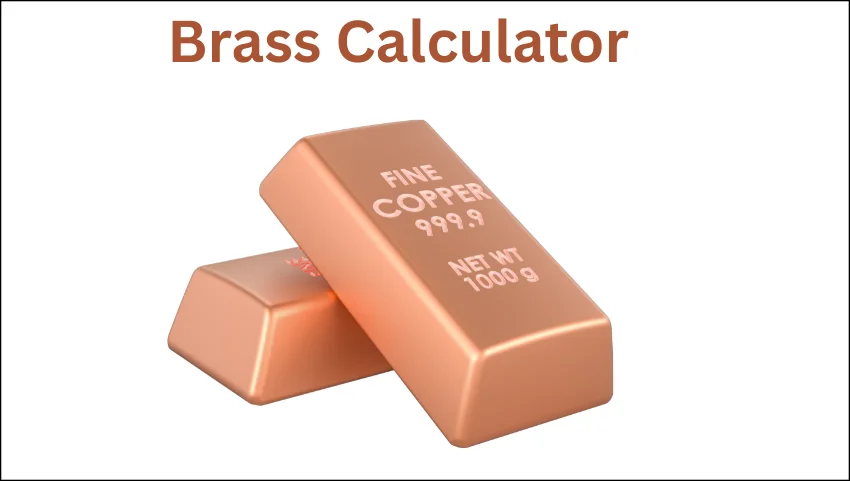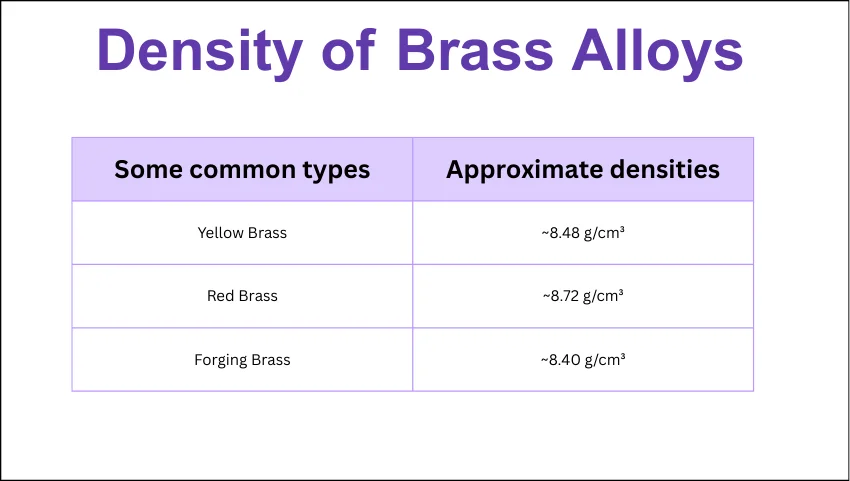Brass Calculator
Brass is a widely used metal alloy with applications ranging from construction to manufacturing. Calculating the volume or weight of brass required for a project is crucial for effective planning and budgeting. This is where a brass calculator comes in handy. This article will explain what a brass calculator is, why it is important, how to use it effectively, and where to find reliable tools for these calculations. The tone is kept simple and easy to understand for everyone.
What Is a Brass Calculator?
A brass calculator is a tool, often available online or as an app, that helps calculate either the volume or weight of brass you need based on dimensions or the quantity of brass components. It is widely used by engineers, builders, manufacturers, and hobbyists to estimate material requirements quickly and accurately without manual errors.

The calculator can be used for different shapes of brass items, such as bars, rods, tubes, sheets, strips, and plates.
Why Is a Brass Calculator Important?
Using a brass calculator is important because:
- Accuracy: It converts measurements into precise volume or weight, reducing human calculation errors.
- Time-Saving: It quickly provides results without the need for complex formulas or lengthy manual work.
- Cost Estimation: Helps budget and order the correct amount of brass, preventing wastage or material shortage.
- Project Planning: Assists engineers and constructors in material management for deadlines and expenses.
Units Used in Brass Calculation
Different units can be used for brass calculators depending on the region and the need. Common units are:
- Dimensions: Inches, feet, meters, centimeters, millimeters.
- Volume: Cubic feet, cubic meters, brass (an Indian construction industry unit where 1 brass = 100 cubic feet).
- Weight: Kilograms (kg), pounds (lbs).
It is essential to input the measurements in the units supported by the calculator or convert them before the calculation.
How to Use a Brass Calculator?
Though various brass calculators have different interfaces, most work with a similar process:
- Select the shape of the brass item (round bar, hex bar, tube, sheet, strip, etc.).
- Enter dimensions (length, width, height, diameter, and thickness, depending on the shape).
- Select units for each measurement.
- Input quantity if applicable (number of pieces).
- Enter the density of the brass type if the calculation involves weight (common brass densities vary around 8.4 to 8.7 g/cm³).
- Calculate to get the desired output (volume or weight).
Common Shapes and Their Calculation Formulas
Here are formulas used for volume and weight calculations of some standard brass shapes:
1. Brass Rod or Round Bar
- Volume: V=π×(D2)2×LV=π×(2D)2×L
- Weight: W=V×ρ
Where:
DDD = diameter,
LLL = length,
ρ\rhoρ = density of brass (typically around 8.5 g/cm³).
2. Brass Tube or Pipe
- Volume: V=π×((2D)2−(2d)2)×L
- Weight: W=V×ρ
Where:
DDD = outside diameter,
ddd = inside diameter,
LLL = length.
3. Brass Hex Bar
- Volume: V=233×S2×L
- Weight: W=V×ρ
Where:
SSS = side length of hexagon,
LLL = length.
4. Brass Sheet or Strip
- Volume: V=L×W×T
- Weight: W=V×ρ
Where:
LLL = length,
WWW = width,
TTT = thickness.
Density of Brass Alloys
The density of brass varies depending on its alloy composition. Some common types and their approximate densities are:

- Yellow Brass: ~8.48 g/cm³
- Red Brass: ~8.72 g/cm³
- Forging Brass: ~8.40 g/cm³
Knowing the correct density for the specific alloy is crucial for precise weight calculations.
Practical Applications of Brass Calculators
- Construction Industry: Calculating the volume of brass needed for fixtures, railings, or decorative work.
- Manufacturing: Determining weight and volume for fabrication of brass components.
- Inventory Management: Helps suppliers and warehouses estimate stock requirements.
- Transport and Shipping: Estimating weight affects shipping costs and logistics.
- DIY Projects: Hobbyists can plan materials and costs for their projects easily.
Step-by-Step Example Using a Brass Calculator
Suppose you want to find the weight of a brass rod that is 2 meters long and 5 cm in diameter, using yellow brass (density = 8.48 g/cm³).
- Convert 2 meters to 200 cm.
- Use the formula for volume of a cylinder:
V=π×(2.5)²×200=π×6.25×200=3.1416×1250=3926.99 cm³ - Calculate weight:
W=3926.99×8.48=33294.29 g=33.29 kg
You can verify such calculations instantly using any brass calculator online.
Tips for Accurate Brass Calculation
- Always double-check units before entering measurements.
- Use the correct density based on the brass alloy type.
- For pipes or tubes, measure both outside and inside diameters.
- When calculating bulk orders, multiply weight/volume per piece by the total quantity.
- Use calculators that allow unit conversions if measurements are in mixed units.
Brass vs Other Metals: Why Calculate Precisely?
Brass is often preferred for decorative and industrial uses because of its corrosion resistance and aesthetic appeal. Calculating its weight/volume precisely matters because:
- Brass is generally more expensive than common metals.
- Weight affects transport cost and handling.
- Precise calculation ensures no wastage and efficient material usage.
Advanced Features in Some Brass Calculators
Modern brass calculators may include:
- Integration to convert volume to cost by allowing you to enter brass rates.
- Multi-shape calculations in a single input form.
- Conversion between metric and imperial units.
- Support for custom alloy densities.
- Printing and exporting calculation reports.
Such features add convenience for professionals working on complex projects.
Frequently Asked Questions (FAQs)
Q1: What is 1 brass in volume measurement?
A: In the Indian construction industry, 1 brass = 100 cubic feet, commonly used for bulk materials like sand and gravel.
Q2: Can a brass calculator be used for other metals?
A: Some calculators support multiple metals like copper, bronze, and aluminum. Check the calculator description.
Q3: How to find density for brass alloy if unknown?
A: Standard density values range between 8.4 and 8.7 g/cm³. Consult material datasheets or supplier data for precise values.
Q4: Is the brass calculator useful for small DIY projects?
A: Yes, it helps estimate material needs and budget efficiently even for small quantities.
Conclusion
A brass calculator is an essential tool for anyone working with brass materials, from construction workers to manufacturers and hobbyists. By entering dimensions and optionally the density of the brass alloy, these calculators provide quick and accurate results for volume and weight, saving time and reducing errors. Whether planning a large construction project or a small craft, using a brass calculator ensures effective material estimation and cost management.
